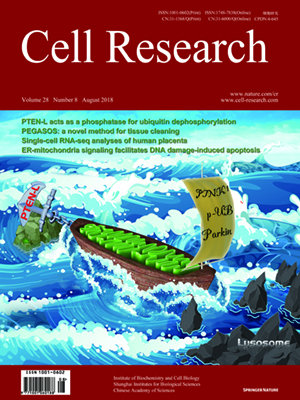
Advanced Search
Submit Manuscript
Advanced Search
Submit Manuscript
Volume 28, No 8, Aug 2018
ISSN: 1001-0602
EISSN: 1748-7838 2018
impact factor 17.848*
(Clarivate Analytics, 2019)
Volume 28 Issue 8, August 2018: 833-854 |
Pengli Zheng 1,2, Qingzhou Chen 1, Xiaoyu Tian 1, Nannan Qian 1,3, Peiyuan Chai 1, Bing Liu 1,4, Junjie Hu 5,6, Craig Blackstone 2,Desheng Zhu 7, Junlin Teng 1 and Jianguo Chen 1,4
1 Key Laboratory of Cell Proliferation and Differentiation of the Ministry of Education, State Key Laboratory of Membrane Biology, College of Life Sciences, Peking University, Beijing 100871, China; 2 Cell Biology Section, Neurogenetics Branch, National Institute of Neurological Disorders and Stroke, National Institutes of Health, Bethesda, Maryland 20892, USA; 3 College of Life Sciences, Jiangsu Normal University, Xuzhou 221116, China; 4 Center for Quantitative Biology, Peking University, Beijing 100871, China; 5 National Laboratory of Macromolecules, Institute of Biophysics, Chinese Academy of Science, Beijing 100871, China; 6 Department of Genetics and Cell Biology, College of Life Sciences, Nankai University and Tianjin Key Laboratory of Protein Sciences, Tianjin 300071, China and 7 Laboratory Animal Research Center, Peking University, Beijing 100871, China
https://doi.org/10.1038/s41422-018-0065-z